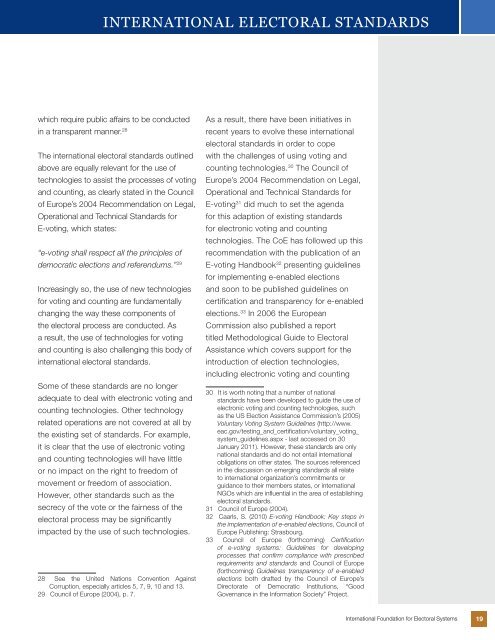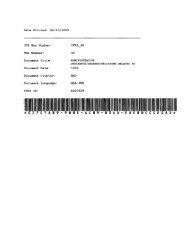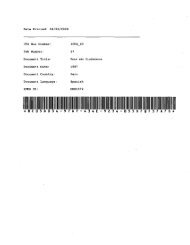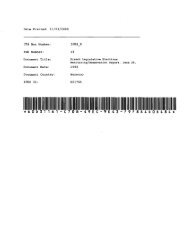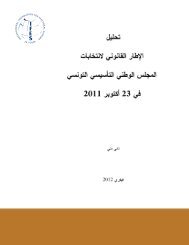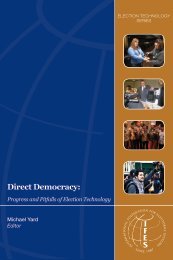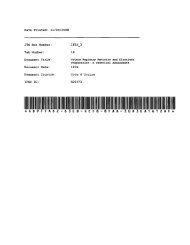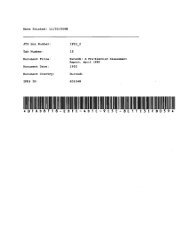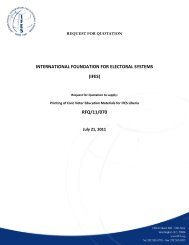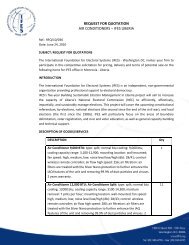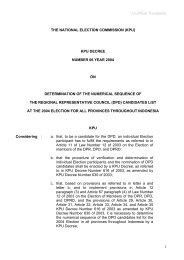Electronic Voting & Counting Technologies - IFES
Electronic Voting & Counting Technologies - IFES
Electronic Voting & Counting Technologies - IFES
- No tags were found...
You also want an ePaper? Increase the reach of your titles
YUMPU automatically turns print PDFs into web optimized ePapers that Google loves.
INTERNATIONAL ELECTORAL STANDARDSwhich require public affairs to be conductedin a transparent manner. 28The international electoral standards outlinedabove are equally relevant for the use oftechnologies to assist the processes of votingand counting, as clearly stated in the Councilof Europe’s 2004 Recommendation on Legal,Operational and Technical Standards forE-voting, which states:“e-voting shall respect all the principles ofdemocratic elections and referendums.” 29Increasingly so, the use of new technologiesfor voting and counting are fundamentallychanging the way these components ofthe electoral process are conducted. Asa result, the use of technologies for votingand counting is also challenging this body ofinternational electoral standards.Some of these standards are no longeradequate to deal with electronic voting andcounting technologies. Other technologyrelated operations are not covered at all bythe existing set of standards. For example,it is clear that the use of electronic votingand counting technologies will have littleor no impact on the right to freedom ofmovement or freedom of association.However, other standards such as thesecrecy of the vote or the fairness of theelectoral process may be significantlyimpacted by the use of such technologies.28 See the United Nations Convention AgainstCorruption, especially articles 5, 7, 9, 10 and 13.29 Council of Europe (2004), p. 7.As a result, there have been initiatives inrecent years to evolve these internationalelectoral standards in order to copewith the challenges of using voting andcounting technologies. 30 The Council ofEurope’s 2004 Recommendation on Legal,Operational and Technical Standards forE-voting 31 did much to set the agendafor this adaption of existing standardsfor electronic voting and countingtechnologies. The CoE has followed up thisrecommendation with the publication of anE-voting Handbook 32 presenting guidelinesfor implementing e-enabled electionsand soon to be published guidelines oncertification and transparency for e-enabledelections. 33 In 2006 the EuropeanCommission also published a reporttitled Methodological Guide to ElectoralAssistance which covers support for theintroduction of election technologies,including electronic voting and counting30 It is worth noting that a number of nationalstandards have been developed to guide the use ofelectronic voting and counting technologies, suchas the US Election Assistance Commission’s (2005)Voluntary <strong>Voting</strong> System Guidelines (http://www.eac.gov/testing_and_certification/voluntary_voting_system_guidelines.aspx - last accessed on 30January 2011). However, these standards are onlynational standards and do not entail internationalobligations on other states. The sources referencedin the discussion on emerging standards all relateto international organization’s commitments orguidance to their members states, or internationalNGOs which are influential in the area of establishingelectoral standards.31 Council of Europe (2004).32 Caarls, S. (2010) E-voting Handbook: Key steps inthe implementation of e-enabled elections, Council ofEurope Publishing: Strasbourg.33 Council of Europe (forthcoming) Certificationof e-voting systems: Guidelines for developingprocesses that confirm compliance with prescribedrequirements and standards and Council of Europe(forthcoming) Guidelines transparency of e-enabledelections both drafted by the Council of Europe’sDirectorate of Democratic Institutions, “GoodGovernance in the Information Society” Project.International Foundation for Electoral Systems 19


